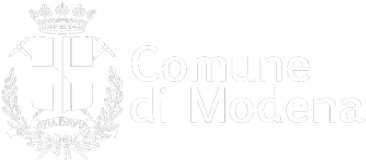Gesu' Redentore church
The design, conceived between 2001 and 2005, gave life to a building, an example of contemporary Italian minimalism, which can today offer the parish – about 14,000 inhabitants – and the city the largest church in the diocese of Modena.
Its exterior conveys a general sensation of beauty and mysticism. The bell tower, together with the main body of the church and the large parvise, creates a place to receive the community and the city, its architectural elements – façade, narthex and portal – suggesting acceptance and communion with God, rather than monumentality. The building’s simple yet masterful lines create plays of light, volumes and levels, accentuated by the contrast between natural stone and gleaming white – thanks to the use of self-cleaning cement capable of withstanding smog and the elements – to give the complex prestige.
The juxtaposition of linear stone surfaces and transparent facades conveys serenity to the visitor; the light from above and the large windows, which allow plenty of natural light to stream in, heighten the geometric forms, combined with natural choice materials and simple furnishings. A "crown of light" in the upper perimeter encircles the space for the congregation, connecting it symbolically with the heavens, emphasising the upward movement of the walls as far as the large sail of the false ceiling, which dematerialises the structural weight of the roof.
Open air spaces, visible only from the interior, catch the eye: the olive grove, which opens up the area behind the altar like an apse, and the large fountain, on the opposite side, which also symbolically connects the baptism area to the chapel containing the tabernacle.
The layout of the liturgical space, combining modern architecture and the ancient tradition of the church, highlights the congregation, which is not just facing the altar, but one half to the other, arranged along the long sides of a ellipse, which has the Word (low ambon for the biblical word, high for the Gospel, in a structure that monumentalises the Word and reintroduces the icon of the mountain, at the foot and above which one speaks) and the Sacrifice (altar: a 4x4m square, raised 45cm with four access points) as focal points. The Eucharistic community can thus be the subject and the object of prayer, which suggests the full and humble authority of Christ’s mystic body.
The weekday chapel, which can be accessed from the main church body and from outside, concludes the access route and the transition between the parvise, portal, font, celebration axis (ambon and altar), to arrive at the place of the reserved sacrament.
Also forming part of the complex are the parish artworks and the Casa della Carità (House of Charity), the latter being a visible sign of charity in the parish and destined to act as a seed, a stimulus together with other initiatives and preparations for looking after the poor of future generations.
The simple style, masterful use of light, multiple spatial relations, design and structure, quality of materials, more important than any form of decoration or ornament and without concessions to convenience or unnecessary evocations, together make the church of Gesù Redentore a sophisticated work of contemporary architecture that expresses a language capable of surprising, moving and capturing the visitor.
ARTWORKS
The church of Gesù Redentore is home to a cycle of paintings by the Dutch artist Bert van Zelm (Amsterdam 1955), whose works, in sketches, were part of the design submitted by the architect Galantino, winner of the CEI competition.
The cycle includes:
- Madonna and child with the poor, on the south wall of the main body of the church, above the low window with a view of the fountain outside;
- the Crucifixion, on the north wall of the main body of the church, top left of the window behind the altar;
- Via Charitatis, 14 panels in screen printed glass, located on the north wall of the olive grove and representing the stations of the passion according to the gospel of Saint John;
- the Pietà, a triptych occupying the entire north wall of the weekday chapel, on the left entering the main body of the church
With a fresh approach to the Incarnation, the painting by van Zelm – who also looks back to Rembrandt and Caravaggio – presents the divine as pictorial flesh, almost physically present, a marvellous and powerful divine precisely for his proximity to man, capable of dwelling within him and transforming him, taking on his limits and anxieties
Opening hours
The church opens every day from 8.00 am to 9.00 pm (accept during celebrations).
Tickets and admission
Free entrance.





